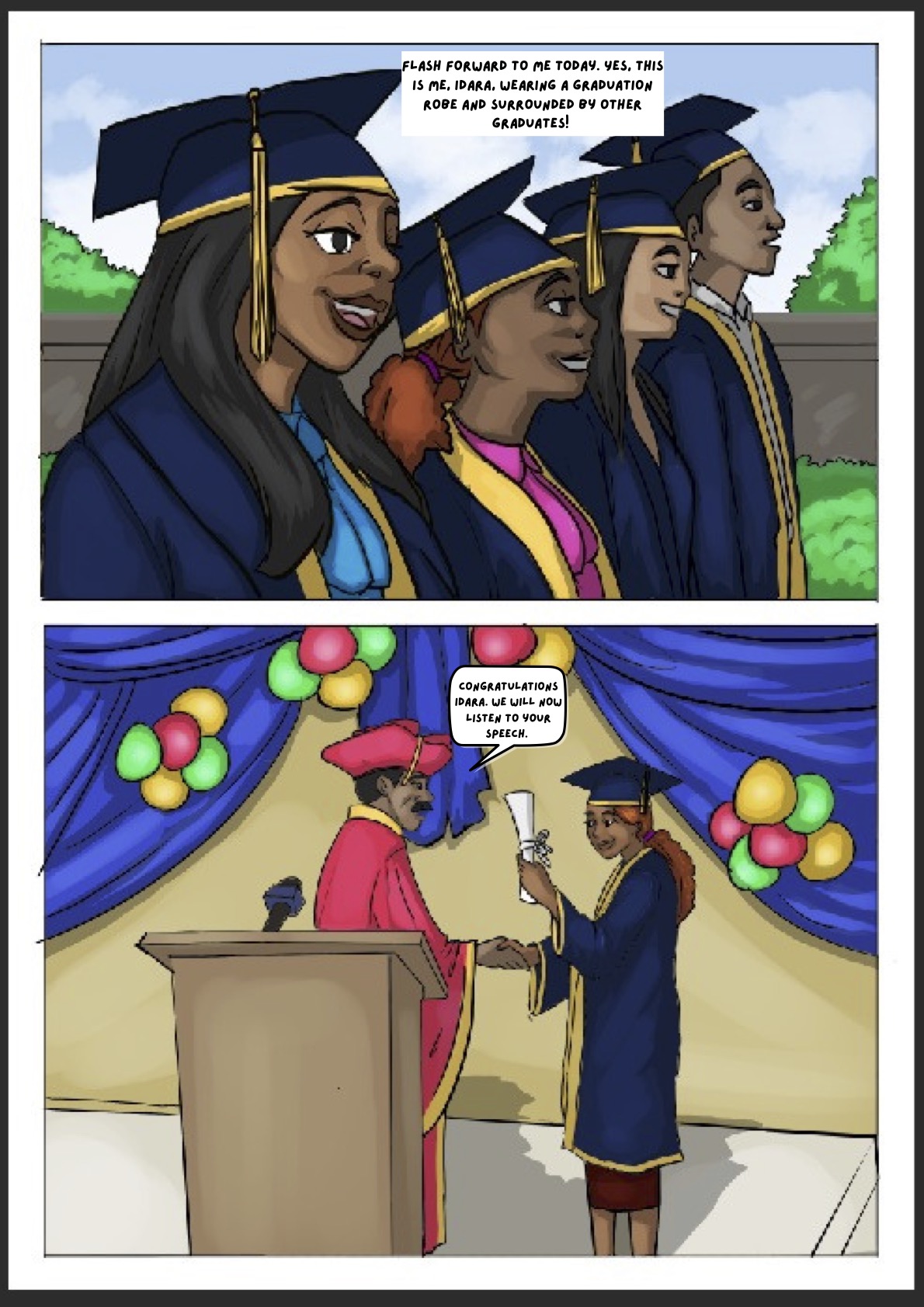Even while researchers, economists, engineers and policy makers are all working to make the transition to cleaner energy happen, tackling a problem as complicated as climate change means that all kinds of solutions have to be in play. And it turns out that research has also proven that girls’ education is one of the world’s most important solutions to the climate crisis. More than 129 million girls do not have access to education - which means they are denied their basic human right to an education. If policy leaders around the world fully commit to ensuring that all girls have access to their right to education then the world would be making huge progress toward addressing climate change and its devastating impacts.
WHAT DO YOU THINK?
How does ensuring all girls have access to a great education help address climate change?
Knowledge and skills

 Education can save girls' lives in communities affected by climate disasters
Education can save girls' lives in communities affected by climate disasters
Education gives all people greater knowledge, new skills and better understanding of their own rights. All of these things are important in relation to climate change related natural disasters, especially for girls and women because the United Nations’ research shows that girls and women are disproportionately affected by climate disasters. Education can literally save lives of girls who might be living in a community affected by disastrous floods or storms for example. With education, girls can get early warnings about natural disasters, better information about how to get to safety, or how to get to resources that can help them and their families. With education girls can also better understand their rights - rights to quality education, rights to security, rights to be free from exploitation and violence. Consider Idara’s story - with education Idara can help her family and other farmers adapt to the changes that are impacting agriculture and her family’s farm.
Community resilience

 Investing in girls’ education leads to effective climate resilience
Investing in girls’ education leads to effective climate resilience
The 2030 Agenda for Sustainable Development report gives strong evidence that investing in girls’ education, particularly secondary education, leads to effective climate resilience to communities and regions impacted by weather-related disasters.
The report indicates that when girls have 12 years of quality education there are corelating reductions in social inequalities that result in girls’ vulnerability to climate change. The University of Notre Dame has also done research showing that for each additional year of schooling girls receive, their countries’ resilience increases in the range of 1.6–3.2 points on the ND-GAIN Index. The ND GAIN Index summarizes a country's vulnerability to climate change and its ability to recover and improve resilience.
Leadership

 Women in legislative positions lead to stronger climate policies
Women in legislative positions lead to stronger climate policies
There is a great deal of recent research that shows a clear link between women’s leadership and better environmental outcomes - and girls’ education is the precursor for women’s leadership. Studies have shown that countries with higher proportions of women in legislative bodies are more likely to support conservation and land preservation; more likely to ratify international environmental treaties; and more likely to have stricter climate change policies. One study also found that countries that have had a longer history of equal rights for women have lower carbon emission rates per person. Another study shows a 10 percent increase in women’s participation in legislative bodies is correlated to a 0.24 metric ton decrease in carbon dioxide emissions per person.
Green skills to help drive the energy transition

 Girls in STEM will help drive the transition to clean energy
Girls in STEM will help drive the transition to clean energy
Education means that girls have the opportunity to develop green skills - for example skills in renewable energy, skills in sustainable agriculture, skills in energy efficient systems - that will help drive the clean energy transition and also help them and their families prosper. Currently, around the world, girls are underrepresented in STEM studies. That needs to change to ensure that girls and women are fully part of the greener economy.
Next
